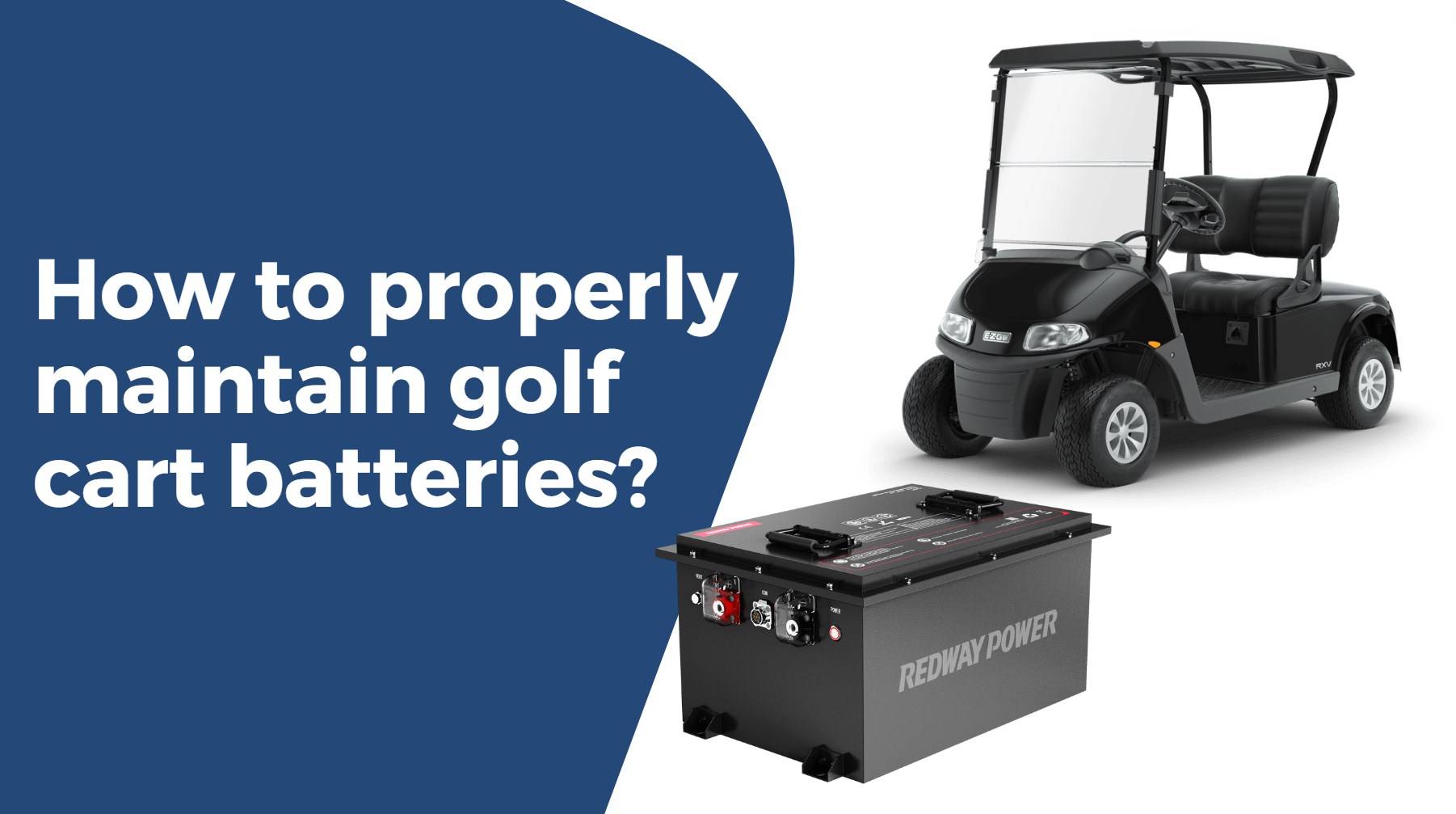- Rack-mounted Lithium Battery
- Golf Cart Lithium Battery
-
Golf Cart Lithium Battery
- 36V 50Ah (for Golf Carts)
- 36V 80Ah (for Golf Carts)
- 36V 100Ah (for Golf Carts)
- 48V 50Ah (for Golf Carts)
- 48V 100Ah (Discharge 100A for Golf Carts)
- 48V 100Ah (Discharge 150A for Golf Carts)
- 48V 100Ah (Discharge 200A for Golf Carts)
- 48V 120Ah (for Golf Carts)
- 48V 150Ah (for Golf Carts)
- 48V 160Ah (Discharge 100A for Golf Carts)
- 48V 160Ah (Discharge 160A for Golf Carts)
-
Golf Cart Lithium Battery
- Forklift Lithium Battery
- 12V Lithium Battery
- 24V Lithium Battery
- 36V Lithium Battery
- 48V Lithium Battery
-
48V LiFePO4 Battery
- 48V 50Ah
- 48V 50Ah (for Golf Carts)
- 48V 60Ah (8D)
- 48V 100Ah (8D)
- 48V 100Ah
- 48V 100Ah (Discharge 100A for Golf Carts)
- 48V 100Ah (Discharge 150A for Golf Carts)
- 48V 100Ah (Discharge 200A for Golf Carts)
- 48V 150Ah (for Golf Carts)
- 48V 160Ah (Discharge 100A for Golf Carts)
- 48V 160Ah (Discharge 160A for Golf Carts)
-
48V LiFePO4 Battery
- 60V Lithium Battery
-
60V LiFePO4 Battery
- 60V 20Ah
- 60V 30Ah
- 60V 50Ah
- 60V 50Ah (Small Size / Side Terminal)
- 60V 100Ah (for Electric Motocycle, Electric Scooter, LSV, AGV)
- 60V 100Ah (for Forklift, AGV, Electric Scooter, Sweeper)
- 60V 150Ah (E-Motocycle / E-Scooter / E-Tricycle / Tour LSV)
- 60V 200Ah (for Forklift, AGV, Electric Scooter, Sweeper)
-
60V LiFePO4 Battery
- 72V~96V Lithium Battery
- E-Bike Battery
- All-in-One Home-ESS
- Wall-mount Battery ESS
-
Home-ESS Lithium Battery PowerWall
- 24V 100Ah 2.4kWh PW24100-S PowerWall
- 48V 50Ah 2.4kWh PW4850-S PowerWall
- 48V 50Ah 2.56kWh PW5150-S PowerWall
- 48V 100Ah 5.12kWh PW51100-F PowerWall (IP65)
- 48V 100Ah 5.12kWh PW51100-S PowerWall
- 48V 100Ah 5.12kWh PW51100-H PowerWall
- 48V 200Ah 10kWh PW51200-H PowerWall
- 48V 300Ah 15kWh PW51300-H PowerWall
PowerWall 51.2V 100Ah LiFePO4 Lithium Battery
Highly popular in Asia and Eastern Europe.
CE Certification | Home-ESS -
Home-ESS Lithium Battery PowerWall
- Portable Power Stations
How to Properly Maintain and Care for Your Golf Cart

Proper maintenance and care of your golf cart are vital to ensure its longevity and optimal performance. This article outlines essential practices, including cleaning, battery upkeep, tire maintenance, brake inspections, and electrical system checks, providing a comprehensive guide to keeping your golf cart in top shape.
What essential cleaning practices should be followed for golf carts?
Regular cleaning is fundamental to maintaining a golf cart. Dirt and grime can accumulate and affect both appearance and performance. To clean your golf cart effectively:
- Exterior Cleaning: Use mild soap and water with a soft cloth or sponge. Avoid abrasive cleaners that could scratch the surface.
- Interior Care: Wipe down seats, dashboards, and other surfaces with a damp cloth. For vinyl seats, a mixture of bleach and water can help eliminate mold.
- Battery Cleaning: Regularly clean the battery terminals with a mixture of baking soda and water to prevent corrosion.
Chart: Cleaning Schedule
| Task | Frequency |
|---|---|
| Exterior Wash | Monthly |
| Interior Wipe Down | Bi-weekly |
| Battery Terminal Clean | Every 3 months |
How do you maintain the battery of your golf cart effectively?
Maintaining the battery is crucial, especially for electric models. Here are key practices:
- Regular Charging: Charge the batteries after each use to prevent deep discharge.
- Water Levels: Check water levels in lead-acid batteries every two months; refill with distilled water if necessary.
- Battery Health Monitoring: Use a battery gauge to track performance and identify when recharging is needed.

Chart: Battery Maintenance Checklist
| Maintenance Task | Recommended Frequency |
|---|---|
| Charge After Use | Every Use |
| Check Water Levels | Every 2 Months |
| Clean Terminals | Every 3 Months |
Why is tire care crucial for the longevity of golf carts?
Proper tire care ensures safety and efficiency while driving your golf cart. Key practices include:
- Checking Tire Pressure: Regularly inspect tire pressure; most tires should be between 15-25 psi.
- Tire Rotation: Rotate tires every 5,000 miles or as recommended by the manufacturer to promote even wear.
- Visual Inspections: Look for signs of wear or damage, such as cracks or bulges.
Chart: Tire Maintenance Guidelines
| Task | Frequency |
|---|---|
| Tire Pressure Check | Monthly |
| Tire Rotation | Every 5,000 miles |
| Visual Inspection | Monthly |
How can you ensure proper brake maintenance on your golf cart?
Brake maintenance is essential for safety. Follow these guidelines:
- Inspect Brake Pads: Regularly check pads for wear; replace them if they appear thin or damaged.
- Check Brake Fluid Levels: Ensure brake fluid is at appropriate levels; top off if necessary.
- Annual Inspections: Conduct a thorough brake inspection annually or before heavy use.
Chart: Brake Maintenance Schedule
| Task | Frequency |
|---|---|
| Pad Inspection | Monthly |
| Fluid Level Check | Monthly |
| Annual Brake Inspection | Yearly |
What routine checks are necessary for the electrical system of a golf cart?
Maintaining the electrical system ensures all components function correctly:
- Wiring Inspection: Regularly check wires for fraying or loose connections.
- Clean Connections: Remove dirt and corrosion from electrical connections using a wire brush.
- Test Lights and Horns: Periodically check that all lights and horns are functioning properly.
Chart: Electrical System Maintenance Tasks
| Task | Frequency |
|---|---|
| Wiring Inspection | Monthly |
| Clean Connections | Every 3 months |
| Functionality Test | Monthly |
Industrial News
Recent trends in golf cart technology emphasize advancements in battery management systems that enhance performance and safety. Manufacturers are increasingly focusing on integrating smart technologies that monitor battery health and optimize charging cycles, ensuring longer lifespans for electric models. This shift aims to improve user experience while promoting sustainability in recreational vehicle use.
Redway Power Insights
“Proper maintenance of golf carts not only extends their lifespan but also enhances user safety,” states Redway Power’s expert team. “By following a structured maintenance routine that includes regular cleaning, battery care, tire checks, and brake inspections, owners can enjoy their carts without unexpected issues.”
FAQ Section
Q: How often should I clean my golf cart?
A: It’s recommended to clean the exterior monthly and perform interior cleaning bi-weekly.Q: What type of water should I use to refill my battery?
A: Always use distilled water to prevent contamination in lead-acid batteries.Q: How can I tell if my tires need air?
A: Regularly check tire pressure with a gauge; tires should typically be between 15-25 psi.
























